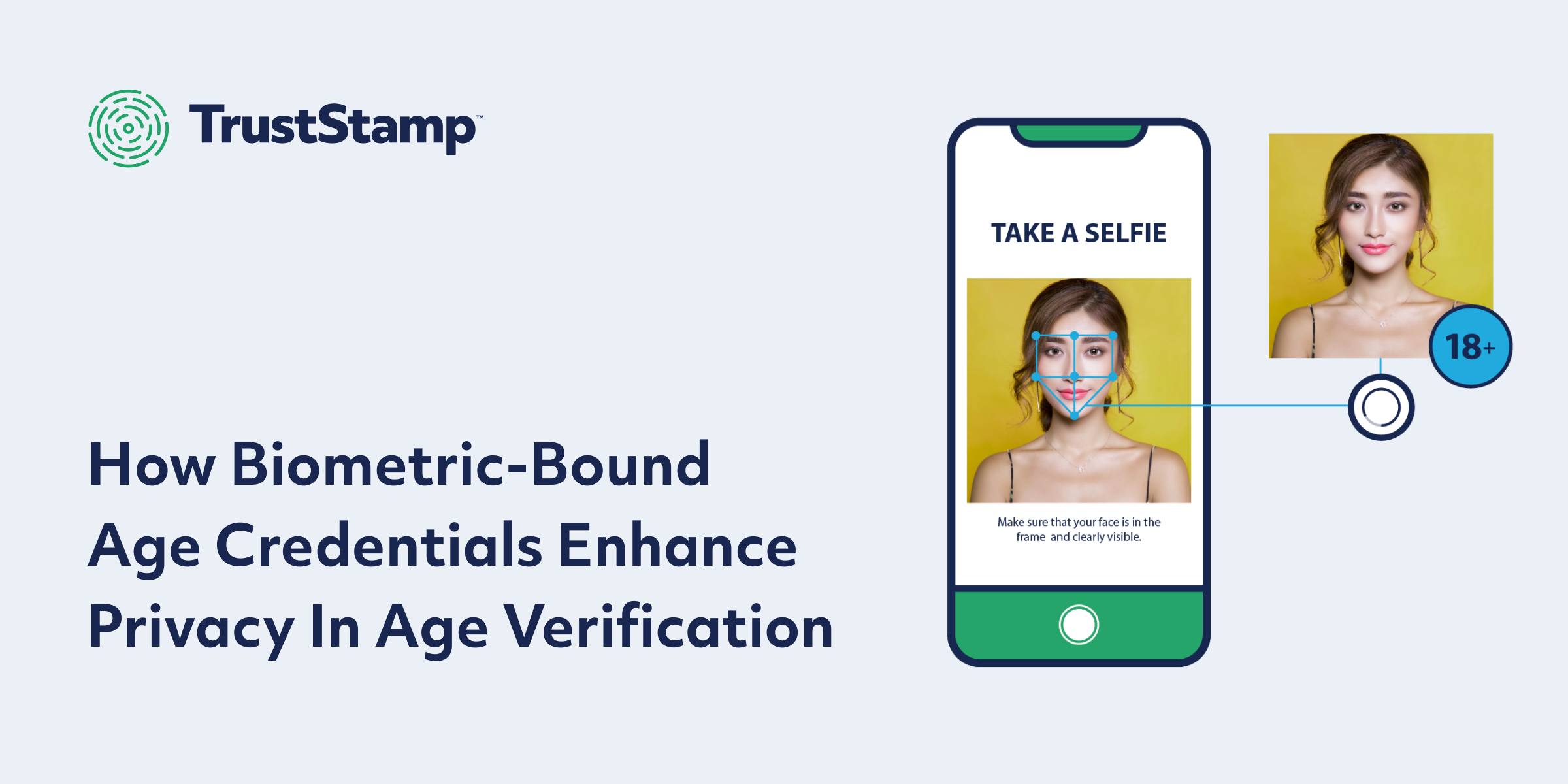Verifying age online is more complex than it seems, and much riskier when it fails.
In the real world, age checks involve physical presence, human judgment, and document inspection. But online platforms often rely on easily manipulated signals like device ownership or stored credentials. This allows children to bypass age restrictions using a parent’s phone, enables impersonation, and exposes businesses to legal, ethical, and reputational risks.
At the heart of these failures lies a critical gap between identity and device trust. Traditional solutions like selfie-ID checks or document uploads raise new privacy concerns while failing to solve the core problem.
This blog post introduces AgeCred: a biometric-bound age credential that proves not just that a user was verified, but that it's the same person returning, without storing biometric data or exposing their identity.
Read on to learn how AgeCred works, why it’s essential, and how it enables platforms, regulators, and trusted institutions to protect minors, meet compliance standards, and restore trust in online age verification, without compromising user privacy.
Why Online Age Verification Is Harder Than Offline
In-person age verification benefits from human judgment and physical inspection of ID documents. For example, a bouncer can compare the face in an ID with the person standing in front of them, spot fake IDs, and judge intent. By contrast, remote (online) authentication suffers from the “device-centric illusion”: trust is placed in the device, not the user. Once a digital credential is stored on a phone or tablet, anyone who unlocks the device can impersonate the holder.
Friendly Fraud Example
Imagine a child using a parent’s phone to access adult-only content online. The child can bypass safeguards simply by unlocking the phone with a passcode, bypassing the on-device biometric recognition altogether. Since current systems assume the device owner is the user, age verification fails. Multi-factor authentication (e.g., OTP via SMS or email) doesn’t help, because those messages are also delivered to the same compromised device.
In contrast, in-person verification avoids these pitfalls by requiring the presence of the actual individual, inspected by a human agent. Online systems, lacking that physical presence check, are far more vulnerable to deception and misuse.
How a Biometric Bound Age Credential (AgeCred) Works
A biometric-bound age credential (or simply age-bound credential, AgeCred) is a privacy-preserving digital certificate that proves a user is above or below a certain age without revealing their actual age or identity. When applied more generally, the technique is called biometric-bound credentials (BBCreds), a cryptographic mechanism that ensures only the legitimate user can activate their credential.
Key Properties
- No stored biometrics: No biometric templates are saved anywhere — not on the server, not on the device.
- Cryptographic binding: A stable secret is generated from a live biometric sample (e.g., a selfie), used to encrypt the age credential.
- Liveness check: Real-time biometric capture (e.g., video or guided selfie) confirms that the person is physically present and not a spoof (e.g., photo or deepfake).
- Offline capable: The verification can happen locally on the device, without needing cloud-based comparison.
Even Without an ID Card
Children who do not have official ID can still receive AgeCred through age estimation methods or trusted third-party attestations, such as:
- Age estimation via facial analysis (as guided by Ofcom, UK)
- Verification by schools or health providers
- Parental/guardian identity-linked enrollment with consent
These flexible input methods allow for the issuance of trustworthy AgeCred even in the absence of traditional identity documents.
Role of AgeCred in Practice
Biometric-bound age credentials do not perform age verification by themselves — they perform secure, privacy-preserving authentication after age verification has already been done. Their role is to ensure that the same person who was verified originally is the one accessing the service.
To be effective and trusted:
- AgeCred should be used in conjunction with age estimation or verification mechanisms.
- The original age check (e.g., using digital ID, facial age estimation, or telco data) is still necessary at registration.
- Once issued, the AgeCred ensures the credential can only be used by the intended user, preventing friendly fraud.
Because the biometric stable key ® is re-generated in real-time and never stored, AgeCreds that are unlocked by the key comply with GDPR and similar privacy frameworks. No personal data or biometric identifiers are stored or shared — making the system highly privacy-preserving and secure.
Conclusion: Reinventing Trust in Online Age Verification
Biometric-bound Age credentials (AgeCreds) provide a robust, privacy-compliant solution to one of the persistent challenges in digital identity: ensuring that the right person is present at the moment of access.
In an online world where device access does not guarantee identity, BBCreds bring back trust without compromising user privacy or storing biometric data. Used alongside reliable age verification techniques, they empower platforms to protect minors, enforce digital age compliance, and preserve user dignity..
